Ohm's Law
Ohm's Law: Overview
This topic covers concepts, such as Ohm's Law, Average Velocity of Electron in the Presence of Electric Field, Ohm's Law in Vector Form, Acceleration of Electron in an Electric Field, Microscopic View of Electric Current, etc.
Important Questions on Ohm's Law
A wire of resistance is gradually stretched to double its original length. It is then cut into two equal parts. These parts are then connected in parallel across a battery. Find the current drawn from the battery.
Two conducting wires X and Y of same diameter but different materials are joined in series across a battery. If the number density of electrons in X is twice that in Y, find the ratio of drift velocity of electrons in the two wires would be:
Derive an expression for the resistivity of a good conductor, in terms of the relaxation time of electrons.
Two metallic wires of the same material have the same length but cross-sectional area is in the ratio . They are connected (i) in series and (ii) in parallel. Compare the drift velocities of electrons in the two wires in both the cases (i) and (ii).
The number density of free electrons in a copper conductor is How long does an electron take drift from one end of a wire 3.0 m long to its other end? The area of cross-section of the wire is and is carrying a current of 3.0 A.
A voltage of is applied across a carbon resistor with first, second and third rings of blue, black and yellow colours respectively. Calculate the value of current, in , through the resistor.
The number density of free electrons in a copper conductor is estimated at How long does an electron take to drift from one end of a wire 3.0 m long to its other end? The area of cross-section of the wire is and it is carrying a current of 3.0 A.
The relation between current and drift velocity is
A. The drift velocity of electrons decreases with the increase in the temperature of conductor.
B. The drift velocity is inversely proportional to the area of cross-section of given conductor.
C. The drift velocity does not depend on the applied potential difference to the conductor.
D. The drift velocity of electron is inversely proportional to the length of the conductor.
E. The drift velocity increases with the increase in the temperature of conductor.
Choose the correct answer from the options given below:
A uniform conducting wire has a resistivity of at room temperature. There are electrons per . For an electric field of along the wire, the mobility of the electrons is
The value of such that the potential difference between and is is
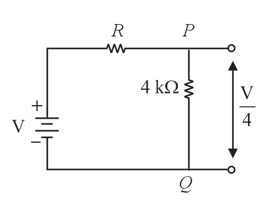
In the circuit shown, the values of the resistances are indicated. The potential difference between the points and is
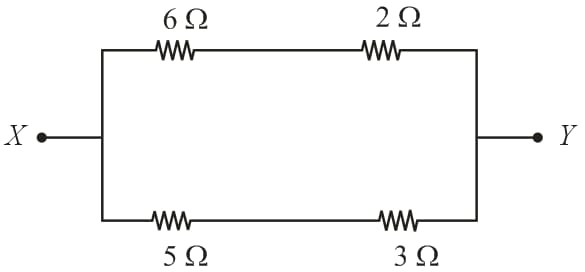
The current passing through the resistance is
The ends of an aluminium wire of length and radius are connected to a voltage source The drift velocity of electrons in the sample is If the same voltage is connected across a length of the same metal having the radius the drift velocity would be
The current in a copper wire is increased by increasing the potential difference between its ends. Which one of the following statements regarding the number of charge carriers per unit volume in the wire and , the drift velocity of the charge carriers is correct?
A conductor of variable cross-section is connected across a battery. Let us consider two cross-sections and . Let and be drift speeds of electrons at those cross-sections respectively then
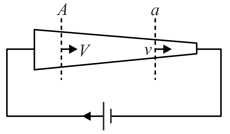
If is specific charge of an electron, find the momentum of all the free electrons (due to their drift velocity) per unit length of a straight conductor of uniform cross-section carries a current .
Calculate the value of average drift velocity through a copper wire having an area of cross-section, carrying a current of , If the number of electrons per cubic meter is .
Assertion: If an electron and proton enter an electric field with equal energy, then path of electron is more curved than that of proton.
Reason: Electron has a tendency to form curve.
In the circuit shown below (on the left) the resistance and the emf source are both variable.
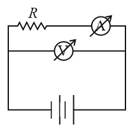
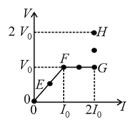
The graph of seven readings of the voltmeter and the ammeter and , respectively) for different settings of resistance and the emf, taken at equal intervals of time , are shown below (on the right) by the dots connected by the curve . Consider the internal resistance of the battery to be negligible and the voltmeter an ammeter to be ideal devices. (Take,
Then, the plot of the resistance as a function of time corresponding to the curve is given by
In the uniform electric field of , an electron is accelerated from rest. The acceleration of the electron is nearly (Charge of electron )
